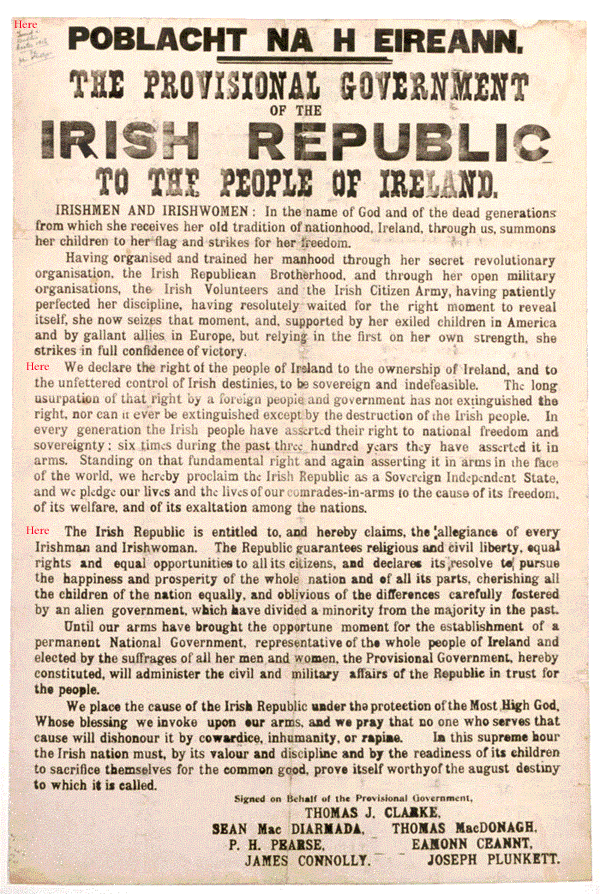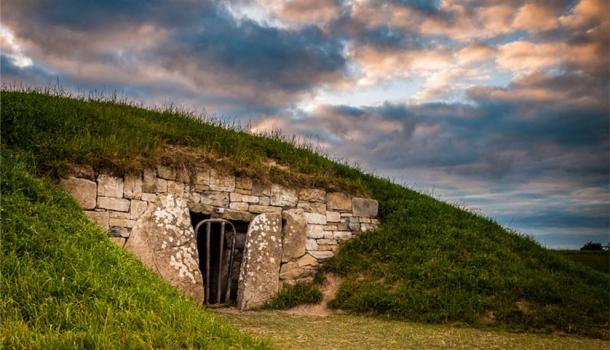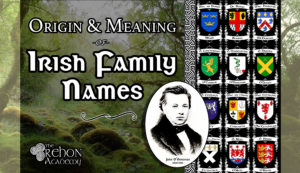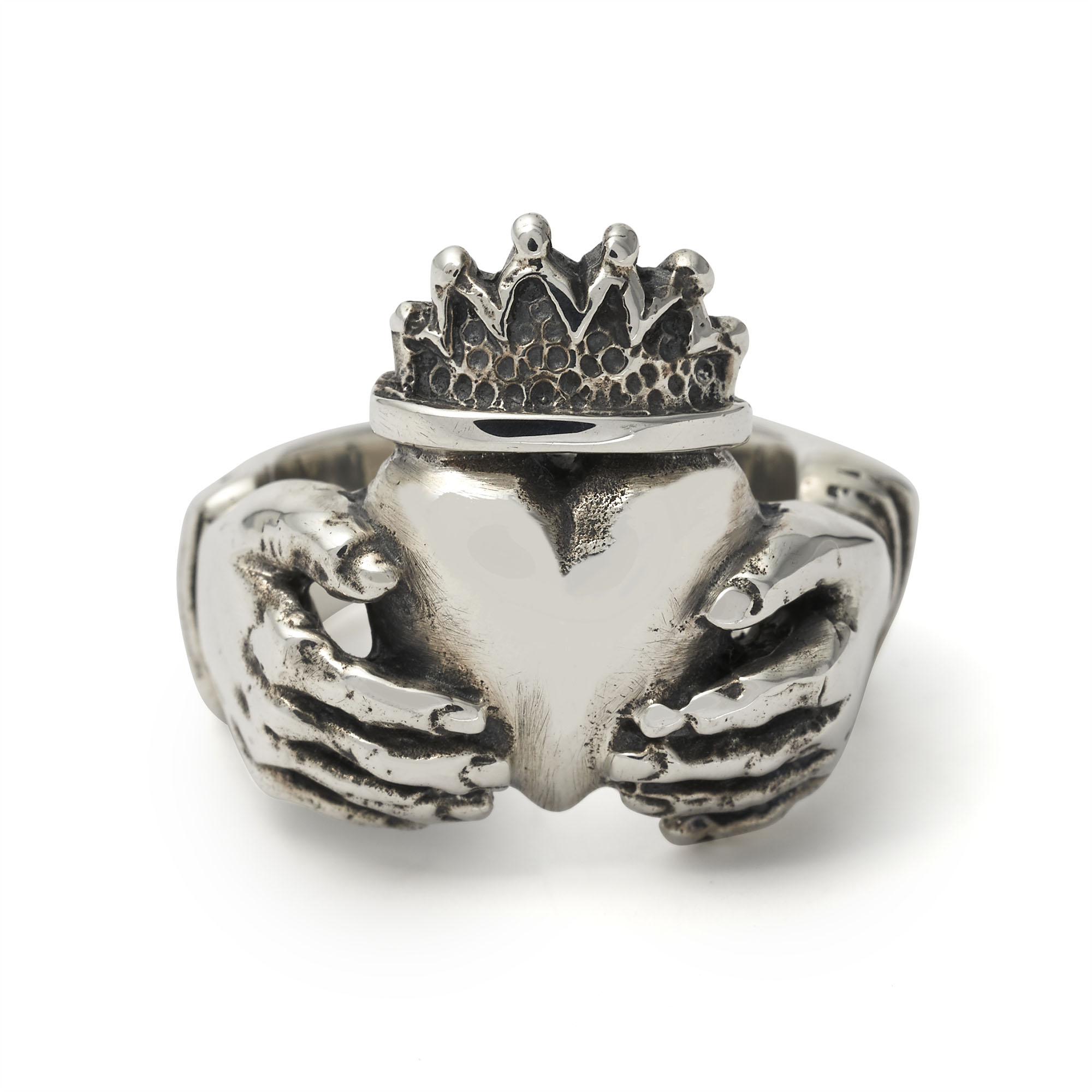The name of the State is Éire, or, in the English language, Ireland.
– Constitution of Ireland, Article 4.
Ireland was once called Ériu after a goddess queen of the Tuatha Dé Danann, the wife of Mac Gréine, and it is from this ancient description that the current official name of Éire is derived; no doubt chosen to signify a form of Irish identity independent of anything British, one that had a rich ancient history and culture of its own.
Pobhlacht na hÉireann, meaning the ‘Republic of Ireland’, was declared to the world by the revolutionary leaders of the 1916 Easter Rising when they announced their Proclamation of Independence on the morning of the 24th of April at the General Post Office in Dublin. Though the leaders were unsuccessful in their efforts, their execution by British forces would act as their final blood sacrifice and serve as the true catalyst for the subsequent War of Independence from 1919 – 1921.
Ultimately the Irish would force the British establishment to the negotiation table. Arthur Griffith, George Gavan Duffy, Robert Barton, Eamonn Duggan, and the famous Irish Republican Army leader Michael Collins traveled to England as Ireland’s representatives to debate terms of peace with some of the British establishment’s most accomplished statesmen; Winston Churchill, David Lloyd George, and Lord Birkenhead, to name a few. The Anglo-Irish Treaty was signed on the 6th of December 1921 and with the stroke of the pen Ireland would be split into two distinct States.

First, the ‘Irish Free State’ would be established as a self-governing dominion of the British Empire, the English King would remain the head of state and Irish members of parliament would be required to swear an Oath of Allegiance to him, the Free State would also take on a portion of the United Kingdom’s debts, and, in the event of a conflict between the terms of this treaty and the subsequent 1922 Constitution of the Free State, the Treaty took precedence. In addition to this, six counties of Ulster would be politically partitioned and remain part of the United Kingdom; Fermanagh, Antrim, Tyrone, Derry, Armagh, and Down would from then on be known as ‘Northern Ireland’.
While many viewed the Treaty as a positive step towards true Independence, and a welcome end to the years of struggle and violence, many others outright rejected it seeing its terms to be an insult to what they had fought for and the lives that had been lost.
The result was an ideological earthquake that led to the Irish Civil War from 1922 – 1923 where finally the Free State forces would prevail. In 1937, the government of Ireland decided to enact and adopt a new Constitution. Bunréacht na hÉireann would officially declare that the “name of the State is Éire, or, in the English language, Ireland”. But it is interesting to note that the word ‘republic’ is nowhere to be found in this new assertion of Irish independence.
From the original aspirations of the leaders of 1916, Ireland would not be referred to as a republic again until 1949 when the government passed a piece of legislation called the Republic of Ireland Act 1948, Section 2 of which states: “It is hereby declared that the description of the State shall be the Republic of Ireland”.




